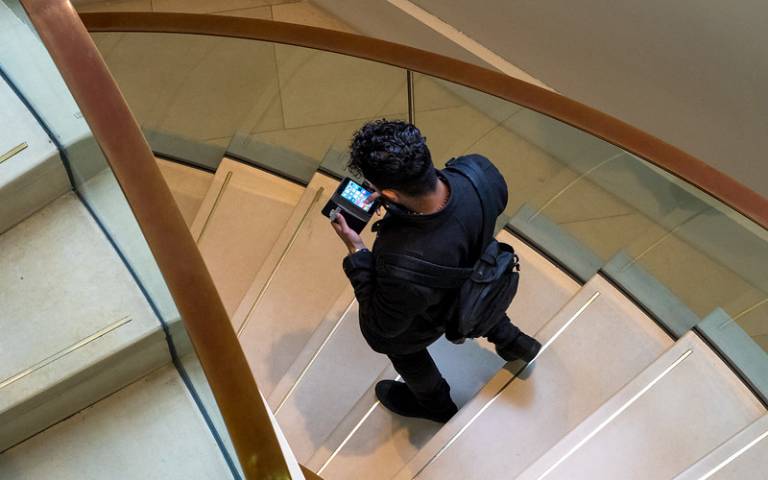Prof Michael Batty Publishes Research on Mobile Phone Data in Nature Cities Journal
11 January 2024
Michael Batty has co-authored an article published in the first issue of Nature Cities. The paper proposes using data from the world’s 7+ billion mobile-phone users as a proxy of the temporal and spatial connections that make cities what they are.

Professor Michael Batty, Emeritus Bartlett Professor of Planning at CASA, has published a Perspective article titled ‘Defining a city – delineating urban areas using cell-phone data’, alongside co-authors Lei Dong (Peking University), Fabio Duarte (MIT), Gilles Duranton (UPenn), Paolo Santi (MIT), Marc Barthelemy (Paris-Saclay, CNRS/EHESS), Luís Bettencourt (University of Chicago), Michael Goodchild (UCSB), Gary Hack (UPenn, MIT), Yu Liu (Peking University), Denise Pumain (Paris 1), Wenzhong Shi (Hong Kong PolyU), Vincent Verbavatz (Paris-Saclay), Geoffrey B. West (Santa Fe), Anthony Yeh (University of Hong Kong) and Carlo Ratti (MIT). The team represent a core group developing a science of cities using big data and new models of urban evolution and growth.
The article features in the inaugural issue of Nature Cities, a new online journal from Nature Portfolio which launched on 11 January 2024. Nature Cities is an online publication which aims to deepen and integrate understanding of the nature of cities by publishing insightful research and opinion articles about cities and urban issues. Perspective articles are peer-reviewed topical and authoritative opinion pieces about scientific research.
How mobile phone call data could help define cities
An accurate and global definition of a city is crucial for the successful implementation of legislation and policies. Existing definitions tend to focus on population density or building placement as seen in satellite imagery. However, those variables do not focus on the dynamic flows of people such as commuters. Michael Batty and his co-authors propose that data from the world’s 7+ billion mobile phone users could serve as a proxy of the temporal and spatial connections that make cities what they are. As well as examining the benefits of mobile phone data, the authors set forth criteria for a good definition of a city, including that it be understandable, universal and accessible, as well as usable by the growing urban science community.
Commenting on the research, Prof Michael Batty said:
“The notion of ‘what is a city’ is a recurring theme in urban studies and planning, and it has been addressed by many scholars for over 100 years. But the emergence of new data sets from computers embedded in the city, from social media to mobile phone calls, has given us a new way of thinking about how we define them. The paper illustrates how we can reconcile existing methods of defining city boundaries with other definitions based on administrative units and connectivity infrastructures.”
The article suggests that mobile phone data in the forms of call detail records and GPS can help researchers understand what constitutes a city to meet the proposed criteria. The anonymised data can offer spatial and temporal information on people within a given geographic area and can shed light on the daytime or nighttime presence of people. The researchers write that “[mobile] phone data provide a consistent collection mechanism across the world and are independent of national censuses”.
The research team notes that mobile phone data has limitations. Primarily, mobile phone data is secured by private companies and is protected from outside parties via non-disclosure agreements and privacy regulations. At the same time, the data itself may overrepresent certain populations, such as younger and wealthier users. However, they conclude that the approach proposed would “facilitate the replicability of studies and comparisons across different geographies, bringing invaluable benefits to the research community”.
More information
- Read the Nature Cities journal
- Watch Elsa Arcaute’s seminar, 'Connecting the city and the problem of scale'
Image: A student studying their phone as they walk down UCL's main library staircase.
 Close
Close

